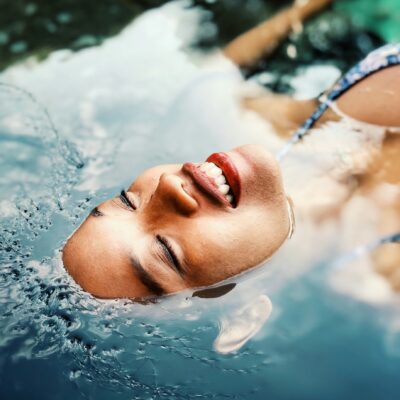Dive into the world of swimming and unlock your potential from beginner to pro! Whether you’re just starting out or looking to refine your technique, mastering the art of swimming is a journey filled with excitement and challenges. Join us as we explore essential tips and tricks to help you glide through the water with grace and efficiency. Let’s make a splash together!
The Importance of Proper Technique in Swimming
Swimming is not just about moving through the water; it’s about doing so effectively and efficiently. Proper technique is the cornerstone of a successful swimmer, enabling you to glide effortlessly while reducing energy expenditure.
By mastering your stroke mechanics, you can minimize resistance and maximize propulsion, leading to improved speed and endurance in the water. Good technique also plays a crucial role in injury prevention, as incorrect movements can strain muscles and joints over time.
Focusing on body position, breathing control, arm motion, leg kick, and overall coordination will help you move through the water with precision. Developing proper form takes practice and patience but pays off by enhancing your overall swimming performance.
Remember: technique matters – it’s the foundation upon which all other swimming skills are built!
Common Mistakes to Avoid as a Beginner Swimmer
As a beginner swimmer, it’s easy to get caught up in the excitement of being in the water. However, there are some common mistakes that many new swimmers tend to make when starting out. One of the most common errors is forgetting to properly breathe while swimming. It’s crucial to establish a rhythmic breathing pattern to avoid feeling breathless and fatigued.
Another mistake beginners often make is kicking too hard or too fast with their legs. Remember, swimming efficiently is not about how fast you kick but rather about maintaining a steady and controlled pace. Additionally, having poor body alignment can hinder your progress in the water. Make sure your body remains straight and streamlined to reduce drag and move through the water more effectively.
Don’t neglect practicing proper arm movements. Many beginners tend to overreach or cross their arms over one another instead of executing smooth strokes. Focus on keeping your arms parallel as they pull through the water for optimal propulsion.
Breathing Techniques for Efficient Swimming
Breathing effectively while swimming is crucial for maintaining your stamina and improving overall performance in the water. One common mistake beginners make is holding their breath, which can lead to fatigue and impact your technique negatively. To breathe efficiently, remember to exhale steadily through your nose or mouth when your face is in the water.
Practice bilateral breathing by alternating sides during each stroke cycle to develop balanced lung capacity and improve overall body alignment in the water. Timing your breath with your arm movements can also enhance efficiency – try inhaling quickly as you turn your head to the side while pulling through with your arms.
Experiment with different breathing patterns during drills to find what works best for you, whether it’s every two strokes or every three strokes. Remember, proper breathing technique not only enhances performance but also helps prevent muscle cramps and fatigue during longer swims.
Tips for Improving Your Arm and Leg Movements
Improving your arm and leg movements in swimming can make a significant difference in your performance.
When it comes to arm movements, focus on keeping your elbows high during the pull phase to maximize propulsion. Your hands should enter the water smoothly in front of your head, not too wide or narrow.
For efficient kicking, keep your legs straight with a slight bend at the knees. Use quick and small flutter kicks rather than big splashing movements. Remember, kicking should complement your arm strokes, not overpower them.
Engage your core muscles for stability and streamline body position. Coordinate your arm pulls with rhythmic breathing to maintain a smooth and continuous stroke cycle.
Practice drills like catch-up drill or single-arm drill to isolate and improve specific aspects of your technique. Consider using equipment like fins or paddles to enhance strength and speed in the water.
Mastering proper arm and leg movements takes time and practice, so be patient with yourself as you work towards refining these essential skills!
Incorporating Drills and Equipment into Your Practice
Looking to take your swimming skills up a notch? Incorporating drills and equipment into your practice routine can be a game-changer.
Drills help you focus on specific aspects of your technique, such as body position or breathing. They allow you to isolate areas for improvement and work on them efficiently.
Kickboards, pull buoys, fins, and paddles are just some of the equipment that can enhance your training sessions. Each piece serves a unique purpose in developing strength, endurance, and stroke mechanics.
Swim with fins to build leg power or use paddles to strengthen your arm muscles. These tools not only add variety but also target different muscle groups for a well-rounded workout.
Mixing in drills and equipment keeps things interesting while pushing you towards mastery in the water. So next time you hit the pool, don’t hesitate to spice up your routine with these valuable additions.
Advanced Techniques for Competitive Swimming
For those looking to take their swimming skills to the next level, mastering advanced techniques for competitive swimming is essential. One key aspect of competitive swimming is perfecting your flip turns. A quick and efficient flip turn can make a significant difference in your race time.
Another crucial technique is the underwater dolphin kick. This powerful kick propels you through the water with speed and efficiency. Timing and rhythm are critical in executing this skill effectively.
Body positioning plays a vital role in competitive swimming. Maintaining a streamlined body position reduces drag, allowing you to glide effortlessly through the water. Focus on keeping your body long and straight to maximize speed.
Incorporating interval training into your workouts can help improve endurance and overall performance in competitions. By alternating between high-intensity sprints and recovery periods, you can push your limits and enhance your stamina.
Remember, consistency and dedication are key when it comes to mastering advanced techniques for competitive swimming. Keep practicing, stay focused, and never stop striving for improvement.
Staying Safe in the Water: Importance of Supervision and Knowing Your Limits
As you dive into the world of swimming, safety should always be a top priority. Whether you’re a beginner or a seasoned pro, it’s crucial to have proper supervision while in the water. Having someone watching over you can prevent accidents and provide assistance if needed.
Knowing your limits is key to staying safe in the water. Pushing yourself too hard can lead to fatigue or even injury. Take breaks when necessary and listen to your body’s signals.
If you’re new to swimming, consider taking lessons from a certified instructor who can guide you through proper techniques and safety precautions. Understanding basic water safety rules like not diving headfirst into shallow pools can help prevent accidents.
Remember, being safe in the water allows you to enjoy swimming without worry. Soak up the joy of gliding through the water by prioritizing your well-being every time you take a dip.
Consistency and Practice are Key to Becoming a Pro Swimmer
Consistency and practice are the pillars of becoming a pro swimmer. By dedicating yourself to improving your technique, avoiding common mistakes, mastering breathing techniques, honing your arm and leg movements, incorporating drills and equipment into your routine, learning advanced techniques for competitive swimming, and always prioritizing safety in the water through supervision and self-awareness of limits, you can elevate your skills to new heights.
Remember that Rome wasn’t built in a day – progress takes time. Stay patient with yourself as you navigate the waters of improvement. With determination, perseverance, and a commitment to regular practice sessions both in and out of the pool, you’ll soon find yourself gliding through the water like a true professional.
So dive in headfirst (figuratively speaking) into refining your craft because with dedication and hard work – who knows? The next Olympic gold medalist might just be within arm’s reach!





